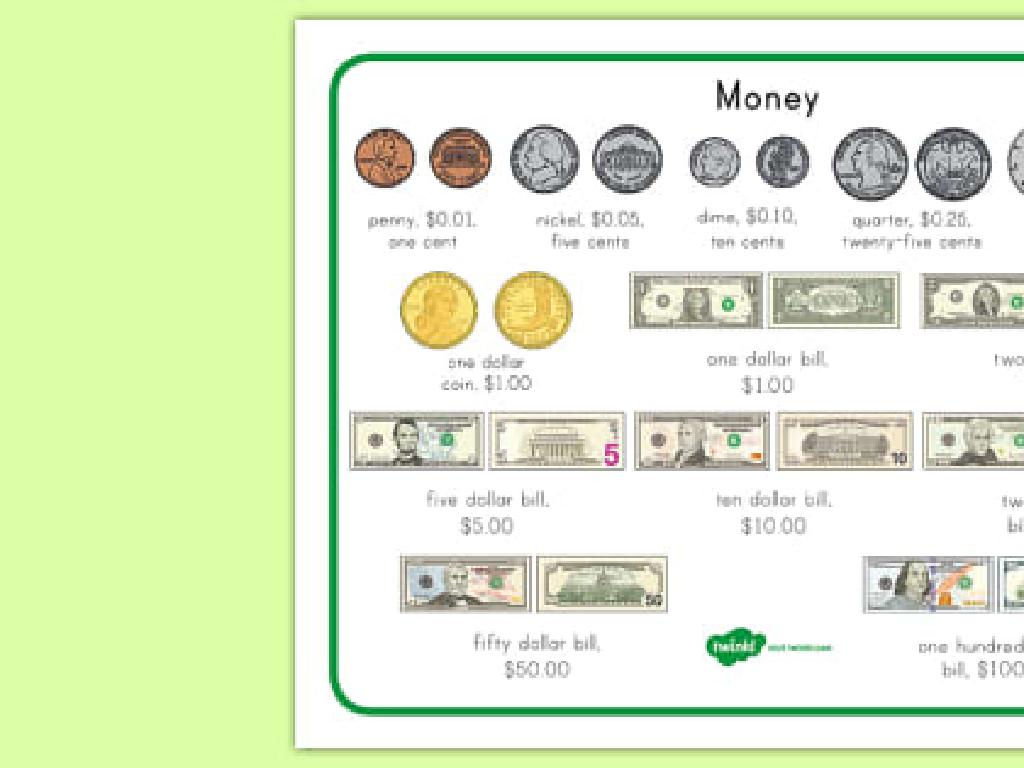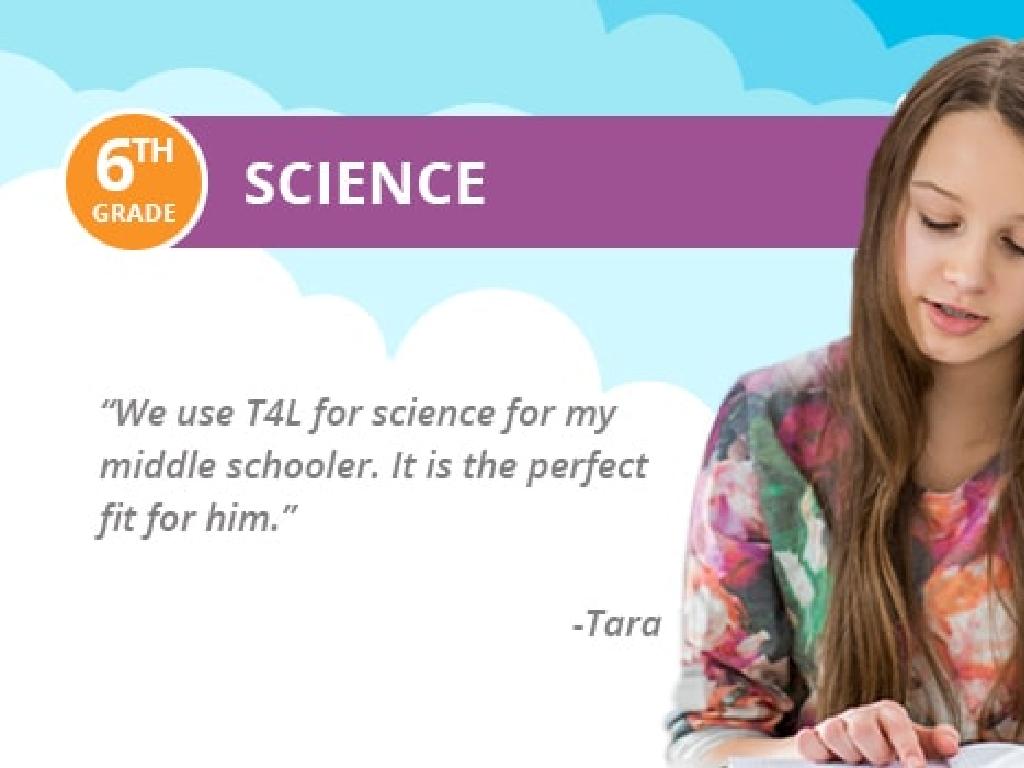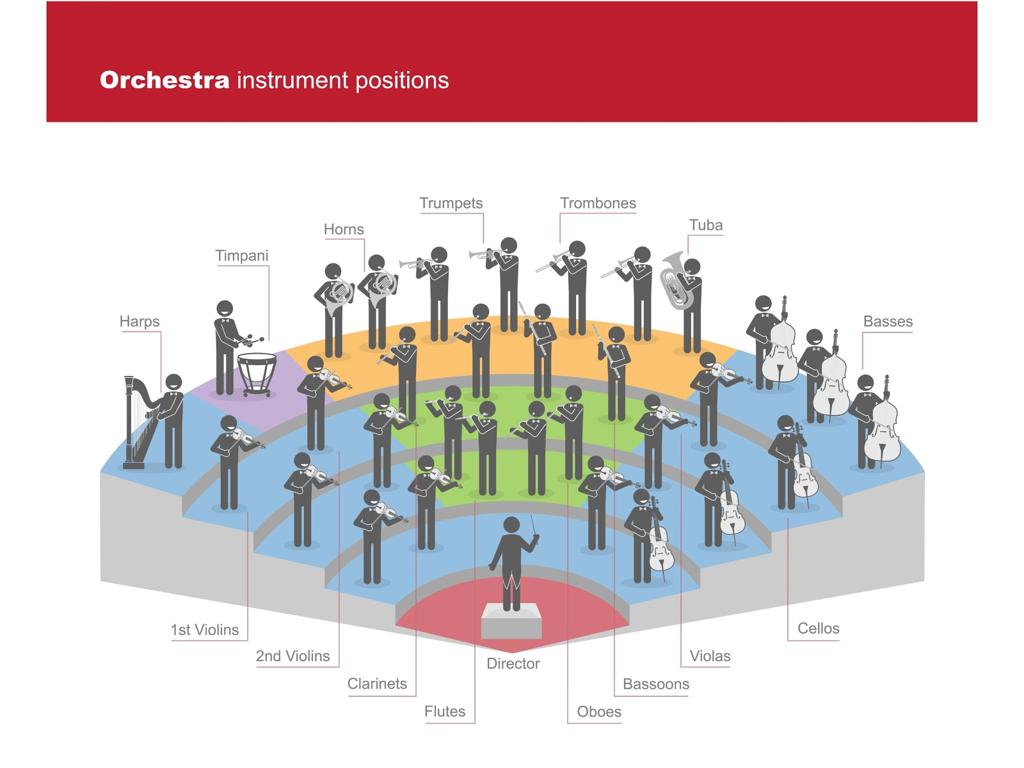Genes, Proteins, And Traits: Understanding The Genetic Code
Subject: Science
Grade: Seventh grade
Topic: Genes To Traits
Please LOG IN to download the presentation. Access is available to registered users only.
View More Content
Introduction to Genetics
– Exploring the world of Genetics
– Genetics is the study of heredity and variation in organisms.
– Genes, Proteins, and Traits basics
– Genes are DNA segments that code for proteins, which lead to different traits.
– The Genetic Code and You
– Our genetic code is like a recipe for who we are, determining our characteristics.
– Genetics as the blueprint of life
– Genetics explains how we inherit features from our parents and makes us unique.
|
This slide introduces the fascinating field of genetics, which is the science of heredity and how traits are passed down from one generation to the next. It’s important to convey that genes are the basic building blocks of life that carry instructions for making proteins, which in turn, determine the traits we exhibit. The genetic code is unique to each individual and is responsible for our physical appearance, behaviors, and even predispositions to certain health conditions. By understanding genetics, students can appreciate the complexity of life and the role genetics plays in making them who they are. Use examples like eye color, height, and other inheritable traits to illustrate these concepts.
Exploring Genes: The Blueprint of Life
– Define a gene
– A gene is a DNA segment responsible for traits
– Genes: life’s blueprint
– Genes determine physical and behavioral traits
– Genes’ location on chromosomes
– Genes reside on chromosomes within the cell nucleus
– Impact on traits and characteristics
|
This slide introduces the concept of genes to students, explaining them as segments of DNA that carry the instructions for making proteins, which in turn determine the traits and characteristics of an organism. Emphasize that genes are like a blueprint, providing the design for life. They are located on chromosomes, which are found in the nucleus of cells. Understanding the location and function of genes is crucial for grasping how traits are inherited and expressed. Use analogies like a recipe book or a construction blueprint to help students visualize the role of genes in biology.
From Genes to Proteins: Decoding Genetic Instructions
– Gene expression process
– Gene expression is how information from a gene is used to build proteins.
– Genes guide protein creation
– Genes contain DNA that tells cells how to assemble proteins.
– mRNA’s role in synthesis
– mRNA copies genetic code from DNA and carries it to ribosomes for protein synthesis.
– Proteins and trait formation
– The proteins produced lead to the physical traits we observe.
|
This slide introduces the fundamental process of how genetic information is translated into the proteins that determine traits in living organisms. Gene expression is the multi-step process by which the information encoded in a gene is used to direct the assembly of a protein molecule. Genes, made up of DNA, act as instructions for cells to make proteins. Messenger RNA (mRNA) plays a crucial intermediary role by copying the genetic code from DNA and transporting it to the ribosomes, where proteins are synthesized. These proteins then go on to perform essential functions in the body and contribute to the organism’s traits. Understanding this process is key to grasping how genetic information is expressed in living things. Encourage students to think of proteins as the ‘workers’ that carry out the instructions given by the ‘boss,’ which is the DNA.
Proteins and Their Functions
– Define proteins and their role
– Proteins are large, complex molecules that play many critical roles in the body.
– Types of proteins and functions
– Enzymes, hormones, and antibodies are different types of proteins with unique roles.
– Protein functions in organisms
– For example, hemoglobin in humans transports oxygen, while enzymes in plants aid in photosynthesis.
– Significance of protein variety
|
This slide aims to explain the fundamental concept of proteins and their diverse functions in living organisms. Proteins are essential for the structure, function, and regulation of the body’s tissues and organs. They are made up of amino acids and have various forms and functions. Discuss different types of proteins such as enzymes, which speed up chemical reactions, hormones, which carry messages, and antibodies, which help fight infections. Provide examples like hemoglobin, which carries oxygen in the blood, and plant enzymes that help in food production through photosynthesis. Highlight the importance of the variety of proteins in adapting to different functions and environments.
Traits and Inheritance: Decoding Genetics
– Exploring what traits are
– Traits are characteristics like eye color or height
– Inheritance of traits
– Traits are inherited from both parents through genes
– Dominant vs recessive traits
– Dominant traits overpower recessive ones
– Predicting trait inheritance
– Use Punnett squares to predict offspring’s traits
|
This slide introduces the concept of traits and how they are passed down from parents to offspring. Traits are specific characteristics that can be observed, such as hair color, height, or leaf shape in plants. Students should understand that traits are inherited through genes, which come in pairs. One gene from each parent. Dominant traits are expressed even if only one dominant allele is present, while recessive traits require two recessive alleles to be expressed. Introduce Punnett squares as a tool to visualize how traits can be inherited and the probability of different outcomes. This foundational knowledge sets the stage for understanding more complex genetic concepts.
Deciphering the Genetic Code
– Genetic code: life’s language
– The genetic code consists of DNA and RNA sequences that instruct cellular function and trait development.
– Reading & interpreting genetic code
– Cells read DNA sequences and translate them into proteins, akin to reading sentences to form a story.
– Genetic code’s role in traits
– Traits like eye color are determined by specific sequences within the genetic code.
– Exploring gene-protein links
– Understanding how genes code for proteins helps explain how traits are passed down and expressed.
|
This slide introduces the concept of the genetic code as the fundamental language of life, which dictates how traits are inherited and expressed in living organisms. It’s crucial to explain that the genetic code is made up of DNA and RNA sequences, which are read and interpreted by cells to produce proteins. These proteins are responsible for a wide range of functions, including the development of physical traits. By exploring the relationship between genes, proteins, and traits, students will gain a deeper understanding of how genetics influences their own characteristics. Use examples like hair color or blood type to illustrate the connection between the genetic code and physical traits. Encourage students to ask questions and think about the implications of genetic research in medicine and biotechnology.
Mutations and Genetic Diversity
– Understanding mutations
– Permanent changes in DNA sequences
– Mutations’ role in diversity
– Mutations introduce new traits, increasing diversity
– Examples of beneficial mutations
– Sickle cell trait confers malaria resistance
– Examples of harmful mutations
– Cystic fibrosis caused by a genetic mutation
|
This slide aims to explain the concept of mutations and their impact on genetic diversity. Mutations are permanent alterations in the DNA sequence of an organism. While often perceived as negative, mutations are a natural part of evolution and contribute to the genetic variation within a population. Some mutations can be beneficial, such as the sickle cell trait providing resistance to malaria in certain regions. However, mutations can also be detrimental, leading to disorders like cystic fibrosis. It’s important to convey that mutations are a double-edged sword in genetics, capable of both creating diversity and causing disease. Encourage students to think critically about the implications of mutations in the natural world and human health.
Class Activity: Extracting DNA from Strawberries
– Today’s experiment: DNA extraction
– Gather materials for the activity
– You’ll need strawberries, dish soap, salt, water, and rubbing alcohol
– Follow the extraction steps closely
– Mash strawberries, mix with soap and salt solution, filter, add alcohol
– Observe the DNA strands
– Look for the white, stringy strands that are the strawberry’s DNA
|
This hands-on activity is designed to give students a tangible understanding of DNA. The materials required include strawberries, dish soap, salt, water, and rubbing alcohol. Students will mash the strawberries, mix them with a soap and salt solution to break down cell walls, filter the mixture, and add alcohol to precipitate the DNA. As they follow these steps, they will be able to see the DNA as white, stringy strands. This experiment provides a visual and practical representation of DNA, reinforcing the concept that DNA is the genetic material present in all living organisms. Make sure to supervise the use of rubbing alcohol and guide students through each step, ensuring they understand the purpose of each action in the extraction process.
Genetics: From Genes to Traits – Conclusion
– Recap: Genes, Proteins, and Traits
– Genes are DNA segments that dictate traits by coding for proteins.
– DNA Extraction Activity Results
– Review what we observed during the DNA extraction experiment.
– Student Questions & Thoughts
– Time for students to ask questions or share insights on genetics.
– Reflect on Genetics Understanding
– Think about how genetics affects everyday life and future technologies.
|
This slide aims to wrap up the lesson on genetics by revisiting the key concepts of how genes code for proteins, which in turn determine traits. Reflect on the DNA extraction activity, discussing what was learned and any observations made. Open the floor for students to engage with their curiosities and thoughts, fostering a deeper understanding of genetics. Encourage them to consider the implications of genetics in their lives and in society, such as in medicine and agriculture. This discussion will help solidify their knowledge and appreciate the relevance of genetics.






